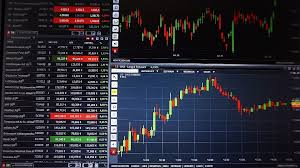
Understanding Forex Trading Platforms: A Comprehensive Guide
Forex trading platforms are essential tools for anyone interested in trading currency pairs. Whether you are a seasoned trader or just starting out, choosing the right platform can significantly impact your trading experience and success. In this article, we will explore the various types of forex trading platforms, their features, and how to select the one that fits your trading style. Additionally, if you’re interested in trading in the Indonesian market, you can check out forex trading platform Forex Brokers in Indonesia for more information.
What is a Forex Trading Platform?
A forex trading platform is software that allows traders to access the foreign exchange market and execute trades. These platforms come in various forms, including desktop applications, web-based interfaces, and mobile apps. They provide traders with tools to analyze market trends, execute trades, and manage their accounts.
Types of Forex Trading Platforms
There are primarily two types of forex trading platforms: proprietary platforms and third-party platforms. Each type has its own advantages and features that cater to different trading needs.
1. Proprietary Platforms
Proprietary trading platforms are developed by brokerage firms. These platforms often have a unique interface and are designed to cater specifically to the needs of the broker’s clients. Examples include platforms like MetaTrader 4 (MT4) and MetaTrader 5 (MT5), which are widely used in the forex industry.
2. Third-Party Platforms
Third-party platforms are developed by independent companies and offer a range of functionalities that may suit various trading styles. Examples include cTrader, NinjaTrader, and TradingView. These platforms can often be integrated with various brokers and provide advanced charting and analysis tools.
Key Features of Forex Trading Platforms
When selecting a forex trading platform, consider the following key features that can enhance your trading experience:
1. User Interface
A clean, intuitive user interface is crucial for efficient trading. Platforms should provide a seamless experience, making it easy to navigate through different features such as charts, trading history, and account management.
2. Charting Tools
Effective charting tools enable traders to analyze market movements and identify potential trading opportunities. Look for platforms that offer a variety of chart types, technical indicators, and customizable settings.
3. Order Execution Speed
The speed of order execution is vital in forex trading, as prices can change rapidly. A reliable platform should ensure quick order placements and confirmations to maximize trading opportunities.

4. Mobile Compatibility
In today’s fast-paced trading environment, having a mobile-compatible trading platform is essential. This feature allows traders to monitor their positions and execute trades on the go.
5. Customer Support
Good customer support can make a significant difference in your trading experience. Look for platforms that offer 24/7 support through various channels such as chat, phone, or email.
How to Choose the Right Forex Trading Platform
Choosing the right forex trading platform involves several considerations. Here are some steps to guide you in making the best decision for your trading needs:
1. Identify Your Trading Style
Determine whether you are a day trader, swing trader, or long-term investor. Your trading style will dictate the features you require from your trading platform.
2. Research Different Platforms
Conduct thorough research on various trading platforms available in the market. Read reviews, watch tutorials, and compare features to find the one that best fits your needs.
3. Test Demo Accounts
Most brokers offer demo accounts that allow you to test their trading platforms without risking real money. Use this opportunity to familiarize yourself with the platform’s functionality and identify any potential issues.
4. Compare Fees and Commissions
Different platforms have varying fee structures, including spreads, commissions, and overnight fees. Ensure you understand the costs involved and choose a platform with fees that align with your trading strategy.
5. Check Security Features
Security should be a top priority when choosing a forex trading platform. Look for platforms that offer robust security measures, such as two-factor authentication (2FA) and encryption protocols, to protect your personal and financial information.
Conclusion
In conclusion, forex trading platforms are a critical component of successful trading. By understanding the various types of platforms, their features, and how to choose the right one, you can enhance your trading experience and increase your chances of success. Always conduct thorough research and take advantages of demo accounts to ensure you make an informed decision that aligns with your trading goals.



